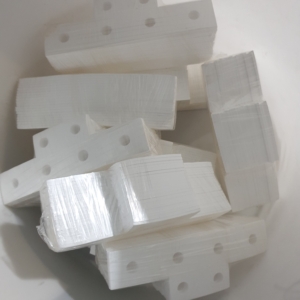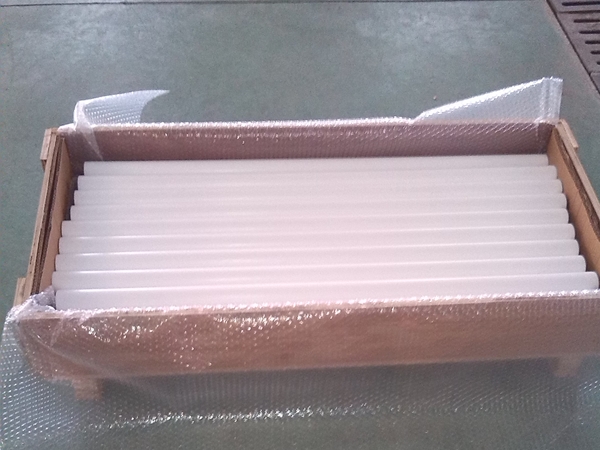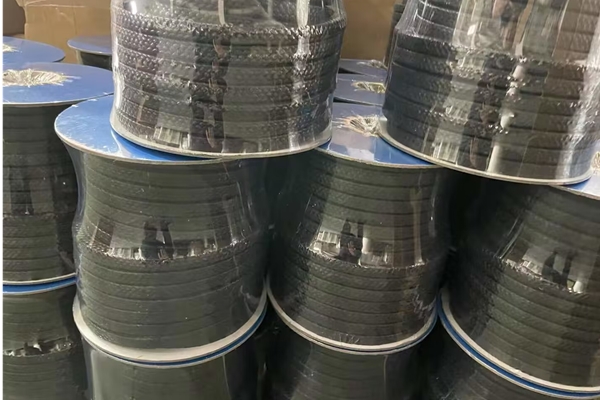As pressure equipment in oil & gas, chemicals, nuclear, and power generation pushes into higher temperature, pressure, and vacuum regimes, sealing reliability becomes mission-critical. Expanded PTFE (ePTFE) gaskets answer this need by combining PTFE’s near-universal chemical inertness with a fibrillated, micro-porous structure that delivers superior conformability and elastic recovery compared with directly molded (virgin) PTFE.
An ePTFE gasket is cut or stamped from 100% PTFE that has been expanded into a tough, highly compressible sheet. Because no binders or fillers are required, the material retains PTFE’s purity and stability while overcoming the cold-flow and low-recovery limitations typical of standard molded PTFE gaskets. In short, you keep the chemistry and gain sealability.
Key Characteristics
Cutting & convertibility. ePTFE sheets process cleanly—die-cut, CNC-cut, or hand-trim—into virtually any profile. This reduces lead time for ASME/EN/JIS flange sizes and custom shapes for valves, pumps, and vessels.
Conformability under low seating stress. The micro-porous network flows into machining marks, scratches, pits, and enamel/glass-lined irregularities, creating a tight seal without excessive bolt load. This is especially helpful on older assets and mixed-hardness flanges.
Chemical resistance you can trust. Like PTFE, ePTFE is essentially inert to most media—strong acids/alkalis, solvents, hydrocarbons, steam, chlorine, and high-purity services. Avoid only a few extreme reagents (e.g., molten alkali metals, elemental fluorine, and certain highly reactive halogen fluorides). This broad compatibility lets plants standardize one gasket family across many units.
Creep and relaxation control. The fibrillated structure offers strong resistance to cold flow, holding gasket stress through thermal and pressure cycling. Mechanical properties remain stable because the sheet contains no adhesives or plasticizers.
Temperature capability. Typical continuous service spans −180 to +260 °C (−292 to +500 °F), with certain grades supporting short-term excursions up to ~300–315 °C (application and manufacturer dependent). Always confirm a grade against your duty cycle.
Low leakage. Properly installed ePTFE gaskets achieve very low gas leakage (e.g., ≤1×10⁻⁴ in common test regimes), supporting emissions control in chlorine/VCM and other regulated services.
Where ePTFE Works
Interfaces with different hardness or fragile faces. ePTFE seals reliably on rigid metal, fiberglass-reinforced plastic, plastic-lined (typically ≤ DN300), and enamel or glass-lined steel flanges. A ~3 mm nominal thickness is common on rigid metal and FRP; confirm thickness vs. flange class and bolt capacity.
Corrosive and high-purity services. Thanks to chemical inertness and low extractables, ePTFE performs across chlor-alkali, acid production, phosphate, pharma, pesticides, chemical fiber, dyeing/finishing, gas and coking, organic synthesis, non-ferrous metallurgy, steel, nuclear/atomic energy, and ion-membrane electrolysis. It also suits high-purity water and oxygenated media (e.g., H₂O₂) when specified correctly.
Chlorine and vinyl chloride duties. The combination of chemical resistance and low leakage rates makes ePTFE a proven choice for dry/wet chlorine and VCM lines, helping large caustic soda and chlor-alkali plants mitigate chronic fugitive emissions.
General plant standardization. Because one material covers strong acid, strong alkali, gas, solvents, hydrocarbons, and water, many sites simplify maintenance training by adopting ePTFE as the prime “universal” soft gasket—reserving specialty materials only where code or temperature dictates.
Use Notes
Match the grade to the duty. For high vacuum, aggressive cycling, or oxygen service, request the appropriate density and certification (e.g., FDA/USP/EU compliance for food/pharma; oxygen cleanliness where needed).
Control seating stress. ePTFE seals at a lower bolt load than molded PTFE, but still requires an even cross-pattern torque. Consider inner rings or limiters if your flange faces are delicate (e.g., glass-lined).
Surface prep matters. Clean, dry, and defect-free faces improve tightness—especially on enamel/glass-lined and lined-plastic flanges.
Verify thickness and facing. Align thickness with ASME B16.5/B16.47, EN 1092-1, or JIS class and the available bolt capacity. Thicker isn’t always better—aim for the seating stress window recommended by your supplier.
Document performance. For emissions-critical lines (e.g., chlorine), specify the test method and leakage target on the datasheet so procurement and QA/QC track the same objective.
ePTFE Gasket Typical Industries & Media
Petrochemical and refining, chlor-alkali and caustic soda, acid and fertilizer production, pharmaceutical and specialty chemicals, chemical fiber and dyeing/finishing, gas and coking, organic synthesis, non-ferrous metallurgy and steel, nuclear/atomic energy, and high-purity product lines. Compatible media include strong acids/alkalis, gases, solvents, hydrocarbons, water/steam, chlorine, aluminum fluoride, and hydrogen peroxide, within the validated temperature/pressure envelope.





